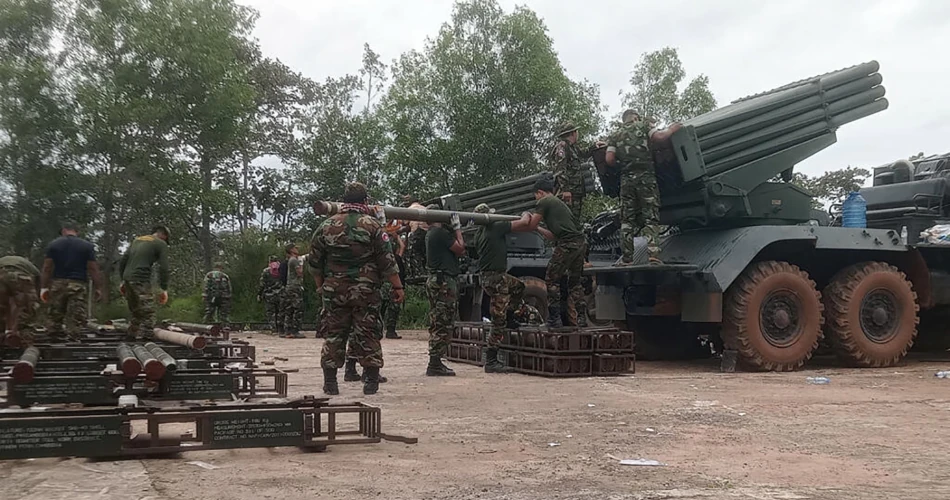
Renewed Border Clashes between Thailand and Cambodia Despite Trump's Mediation Efforts
Thailand-Cambodia Border Conflict Escalates Despite Trump's Ceasefire Ultimatum
Heavy fighting erupted along the Thailand-Cambodia border this morning, defying President Donald Trump's direct intervention and trade threat ultimatum issued just 24 hours earlier. The escalation exposes the limits of U.S. economic leverage in Southeast Asian territorial disputes and threatens to destabilize one of the region's most volatile flashpoints.
Competing Narratives as Artillery Fire Resumes
Both nations are trading blame for reigniting hostilities that involve heavy weaponry, drones, and cluster munitions. Cambodia's Defense Ministry accused Thai forces of resuming bombardment using artillery, unmanned aircraft, and banned cluster bombs, with two historic temples reportedly targeted in the crossfire.
Thailand's Foreign Ministry countered through military spokespersons that Cambodian forces initiated morning attacks on civilian homes in the border province of Surin, according to local Thai media reports.
Trump's Failed Diplomatic Gambit
The renewed violence represents a significant diplomatic setback for Trump, who announced on Truth Social that both countries' leaders had agreed to immediate talks and a swift ceasefire. His threat to halt trade deals with any party continuing the fighting appears to have carried little weight in preventing this morning's escalation.
Economic Leverage Meets Territorial Reality
Trump's trade-focused approach reflects a broader U.S. strategy of using economic tools to influence regional conflicts. However, the immediate resumption of fighting suggests that territorial disputes rooted in historical claims may prove resistant to purely economic pressure, particularly when vital national interests are perceived to be at stake.
Historical Context and Regional Implications
Thailand and Cambodia have experienced periodic border tensions for decades, often centered around disputed temple sites and territorial demarcation. The involvement of historic temples in the current fighting echoes previous conflicts over the Preah Vihear temple complex, which became a UNESCO World Heritage site and flashpoint for nationalist sentiment in both countries.
ASEAN's Non-Interference Dilemma
The conflict tests the Association of Southeast Asian Nations' principle of non-interference in member states' affairs. With both Thailand and Cambodia as ASEAN members, the organization faces pressure to mediate while respecting its foundational commitment to sovereignty.
The escalation also complicates U.S. strategic interests in Southeast Asia, where Washington seeks to maintain influence amid China's growing regional presence. A prolonged conflict between two U.S. partners could create opportunities for Beijing to position itself as a more effective mediator.
Market and Strategic Consequences
Border conflicts in this economically integrated region typically disrupt trade flows and supply chains. The use of advanced weaponry, including drones and heavy artillery, signals both nations' willingness to escalate beyond symbolic skirmishes, potentially requiring more substantial international intervention.
For investors and regional governments, the failure of Trump's initial diplomatic push suggests this conflict may require multilateral engagement rather than bilateral U.S. pressure, potentially extending the timeline for resolution and increasing economic uncertainty in the border regions.
Most Viewed News

 Sara Khaled
Sara Khaled






